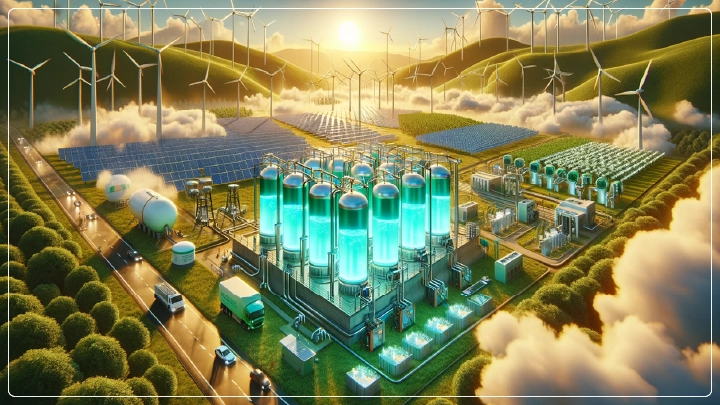November 2025
A catalyst named PtPdCoNiMn with a high-entropy alloy (HEA) basis has been developed by scientists in Bengaluru, which promises to enhance the efficiency of hydrogen production by water electrolysis. The catalyst will accelerate the electrolysis of the water, which is a highly efficient and sustainable way of splitting water into hydrogen and oxygen. It holds the potential for redefining the clean energy scenario by minimizing the use of costly materials like platinum. The catalyst should make hydrogen competitive against fossil fuels as an energy source that is cleaner and cheaper for industrial and renewable energy applications.

High-entropy alloys (HEAs) are advanced metallic materials consisting of five or more elements in nearly equal concentrations. They achieve stability through entropic contribution, which tends to overcome the enthalpic contribution, thus exhibiting a myriad of advantages in terms of properties and promising applications in various fields of industrial applications, including catalysis. The advantages that HEAs have over traditional catalysts include enhanced efficiency, cost benefits, durability and stability, and scalability. The development of HEA catalysts followed a dual approach in the selection of constituent metals and design criteria while applying two different methodologies in synthesizing the PtPdCoNiMn HEA catalyst. The electrodeposition method, a coating method, performed at room temperature and atmospheric pressure, was optimized in terms of solvent choice and deposition potential toward achieving a uniform HEA. The second method, solvothermal synthesis, was operated at high temperature and pressure in a controlled solvent environment where rates of reaction could be controlled and precision applied in syntheses. This enabled the synthesis of single-phase and multi-phase alloys with two, three, four, or all five components.
The PtPdCoNiMn HEA catalyst is efficient in hydrogen production with minor energy losses due to the suitable binding of reaction intermediates, which in turn reduces platinum usage and costs. Being only one-seventh in the amount of platinum compared to its conventional counterparts, the HEA catalyst has cheaper running costs and is therefore accessible for green hydrogen technology. The HEA catalyst works well in alkaline seawater for more than 100 hours with durability and efficiency, essential for practical applications.
Hence, the HEA catalyst would have an impact on green hydrogen and renewable energy. It can reduce material costs and increase efficiency, making green hydrogen cheaper. In turn, it can benefit industries like energy, transportation, and industrial processes. Cost-effective hydrogen production technologies complement India's initiatives toward renewable energy and carbon neutrality, minimizing its dependence on fossil fuels and asserting itself as a global leader in clean energy technologies. Moreover, the HEA catalyst can contribute to strengthening India's clean energy initiatives by promoting innovation in green hydrogen production.
The hydrogen research funded by the Anusandhan National Research Foundation (ANRF) of the Government of India has achieved the rare distinction of being published in prestigious journals, namely, Advanced Functional Materials and Small. The work represents a serious commitment by the Indian government to working on renewable energy technologies. The success of characterizing the PtPdCoNiMn HEA catalyst provides opportunities for further research involving looking into alternative compositions of HEA, scaling up production, and coupling hydrogen production with renewable energy sources such as solar and wind power for maximum sustainability.
The development of the PtPdCoNiMn HEA catalyst marks a significant milestone in the quest for cleaner and more efficient hydrogen production. By reducing reliance on expensive platinum while enhancing catalytic efficiency, this innovation could accelerate the adoption of green hydrogen as a mainstream energy source. As global industries transition towards sustainability, breakthroughs like this will play a crucial role in shaping the future of energy. With continued research, investment, and collaboration, Bengaluru’s pioneering HEA catalyst could contribute to a cleaner, greener, and more sustainable world.
November 2025
November 2025
November 2025
November 2025